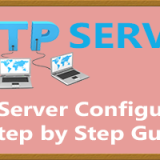Operating system Installation – RHEL7
Operating system Installation – RHEL7 You must have an active Red Hat subscription to download RHEL 7.0 ISO image from Red Hat Customer Portal.
RHEL 7.0 Binary DVD ISO image
Although RHEL can be installed on a variety of platforms, such as AMD 64, Intel 64, IBM System Z, IBM Power, etc. This tutorial covers the RHEL 7.0 basic minimal installation with on an Intel x86-64 processor architecture using a binary DVD ISO image, an installation best suited for developing a high customizable server platform with no Graphical Interface.
Operating system installation – RHEL7
1. After registering on Red Hat Customer Portal go to Download section and grab the last version of RHEL7 DVD Binary ISO image, then burn it to a DVD media or create a USB boo-table media using Unetbootin LiveUSB Creator.
2. Then place the DVD/USB in your appropriate system drive, start your computer, select bootable unit and on the first RHEL prompt select
- Install Red Hat Enterprise Linux 7.0
3. After the system loads, select the language for installation process and hit on Continue.
- Booting RHEL 7
- Select Language for Installation
4. When the installer gets on Installation Summary it’s time to customize the installation process. First click on Date & Time, choose your system location from the provided map and hit on
- Done to apply configuration.
- RHEL 7 Installation Summary
- Select Date, Time and Location
5. The next step is to change Language System Support and Keyboard language. Click on both if you want to change or add other languages to your system but for a server the recommendation is to stick with English language.
- Language System Support
6. If you want to use other sources than the ones provided by the DVD media hit on Installation Source and add your Additional Repositories or specify a network location using HTTP, HTTPS, FTP or NFS protocols then hit on Done to use your new sources. If you can’t provide other sources stick to default one Auto-detected installation media.
- Installation Source
- Select Network Location Operating system installation
Select Required Software’s
7. The next important step is to select your system software. Click on Software Selection and choose your Base Installation Environment from the down-list. For a highly customizable platform where you can install only the packages that you need after the installation, choose Minimal Install with Compatibility Libraries Add-ons, then hit on Done to apply this changes to installation process.
- Select Software Selection
- Select RHEL 7 Minimal Installation
8. The next important step is to configure your system partitions. Click on Installation Destination, select LVM as partition scheme for a
better management over system space, then hit on Click here to create them automatically.
- Installation Destination
- Select LVM Partition Scheme
9. After the installer presents you with default system partition scheme you can edit in any way that suits you (delete and recreate partitions and mount points, change partitions space capacity and file system type, etc.).
As the base scheme for a server you should use dedicated partitions such as:
- /boot – 500 MB – non-LVM
- /root – min 20 GB – LVM
- /home – LVM
- /var – min 20 GB – LVM
File System
With XFS filesystem, which is the most advanced file system in the world. After editing partitions hit on Update Setting button, then click on Done then Accept Changes on Summary of Changes prompt to apply new configurations.
As a note, if your Hard-Disk is larger than 2TB in size the installer automatically will convert partition table to GPT disks and if you want to use GPT table on disks smaller than 2TB, then you should pass the argument install gpt to the boot command line in order to change the default behavior.
- Create /boot Partition
- Select /boot Partition Type
- Create /root Partition
- Summary of Partition Changes
10. The last step before continuing with installation process is setting your Network Connection. Click on Network & Hostname and setup your system hostname. Here you can use your short system hostname or you can append the dot domain (FQDN). RHEL7
- Set System Host Name
11. After setting up hostname bring up your Network Interface by switching the top Ethernet button to ON. If your network provides automatic Interface configurations through a DHCP server your IPs should be visible on Ethernet Interface Card else go to Configure button and provide your static network settings for your appropriate network connection.
- Enable Ethernet Interface
- Enter Static Network Settings
12. After finishing editing Ethernet Interface settings hit on Done which you bring you to default window installer and after you check on your installation settings hit on Begin Installation to proceed further with system installation.
- Begin RHEL 7 Installation
13. As the installation begins writing the system components on your hard-disk, you need to supply your Root Password and create a new User. Click on Root Password and try choose a strong with one at least eight characters in length (alpha-numerical and special characters) and hit in Done when you finish.
- RHEL 7 Installation Process
- Set root Password
14. Then move to User Creation and provide your credentials for this new user. A good idea is to use this user as a system administrator with root powers through sudo command by checking the box Make this user administrator, then click on Done and wait for the installation process to finish.
- Select User Creation
- Enter User Details
15. After the installation finishes the installer will announce that everything completed with success so you should be ready to use your system after reboot.
RHEL 7 Installation Complete
Congratulation! Remove you installation media and reboot your computer and you can now login to your new minimal Red Hat Linux 7.0 environment and perform other system tasks for beginning like register you system to a Red Hat Subscription, activate your system Repositories, update you system and install other useful tools needed to run day to day tasks.
Till then stay tuned to arkit for more such howto’s and don’t forget to give your feedback about the installation. RHEL7
Related Articles
Setting Up Linux Lab Red Hat Enterprise Linux 7
Automated OS Installation using kickstart
Thanks for your wonderful Support and Encouragement
- Get Email | Download E-Books
- Facebook Page
- Youtube Channel
- Exclusive Telegram Group
- Discuss On WhatsApp Group






